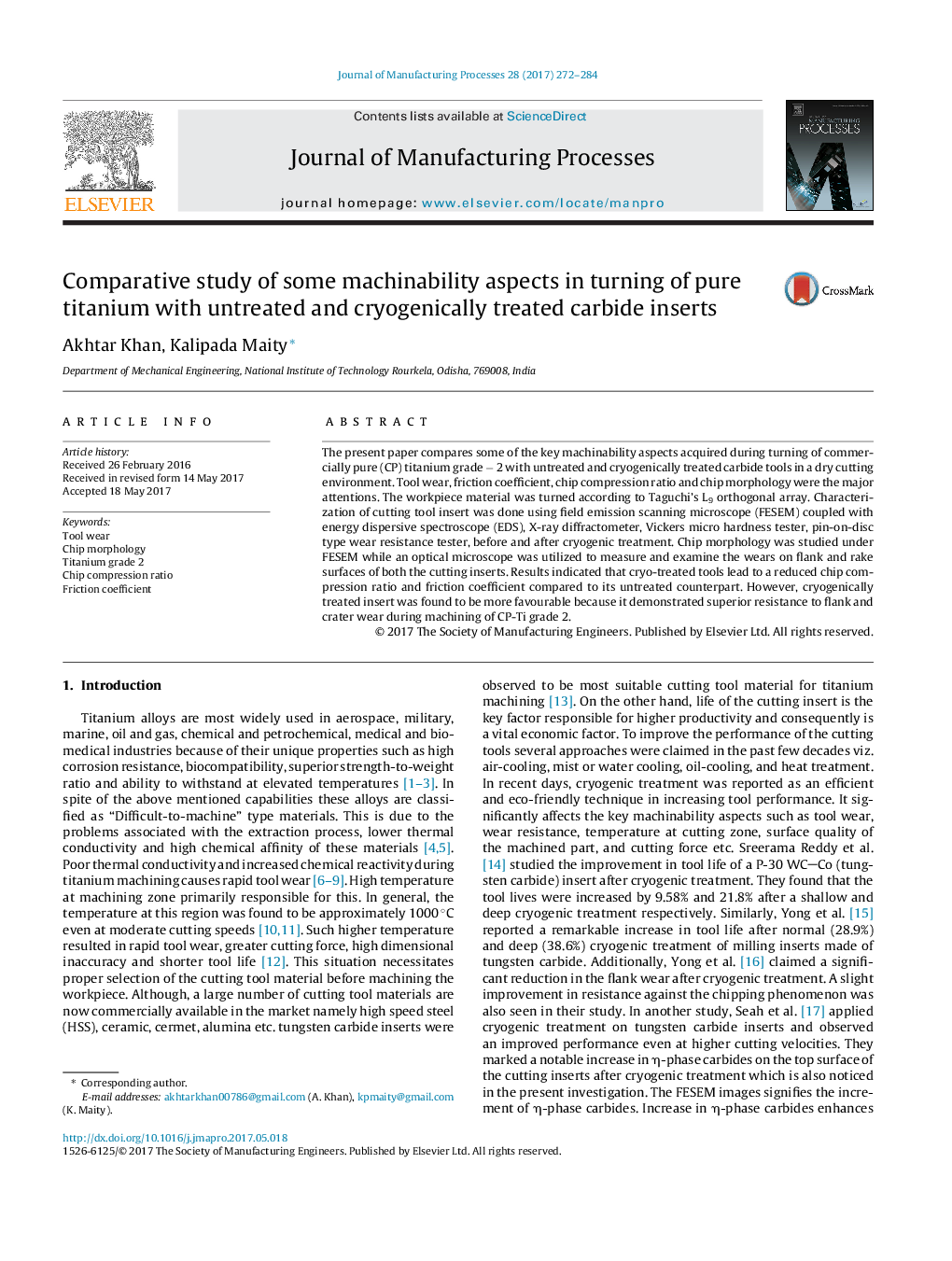| Article ID | Journal | Published Year | Pages | File Type |
|---|---|---|---|---|
| 5469339 | Journal of Manufacturing Processes | 2017 | 13 Pages |
Abstract
The present paper compares some of the key machinability aspects acquired during turning of commercially pure (CP) titanium grade â 2 with untreated and cryogenically treated carbide tools in a dry cutting environment. Tool wear, friction coefficient, chip compression ratio and chip morphology were the major attentions. The workpiece material was turned according to Taguchi's L9 orthogonal array. Characterization of cutting tool insert was done using field emission scanning microscope (FESEM) coupled with energy dispersive spectroscope (EDS), X-ray diffractometer, Vickers micro hardness tester, pin-on-disc type wear resistance tester, before and after cryogenic treatment. Chip morphology was studied under FESEM while an optical microscope was utilized to measure and examine the wears on flank and rake surfaces of both the cutting inserts. Results indicated that cryo-treated tools lead to a reduced chip compression ratio and friction coefficient compared to its untreated counterpart. However, cryogenically treated insert was found to be more favourable because it demonstrated superior resistance to flank and crater wear during machining of CP-Ti grade 2.
Related Topics
Physical Sciences and Engineering
Engineering
Industrial and Manufacturing Engineering
Authors
Akhtar Khan, Kalipada Maity,
